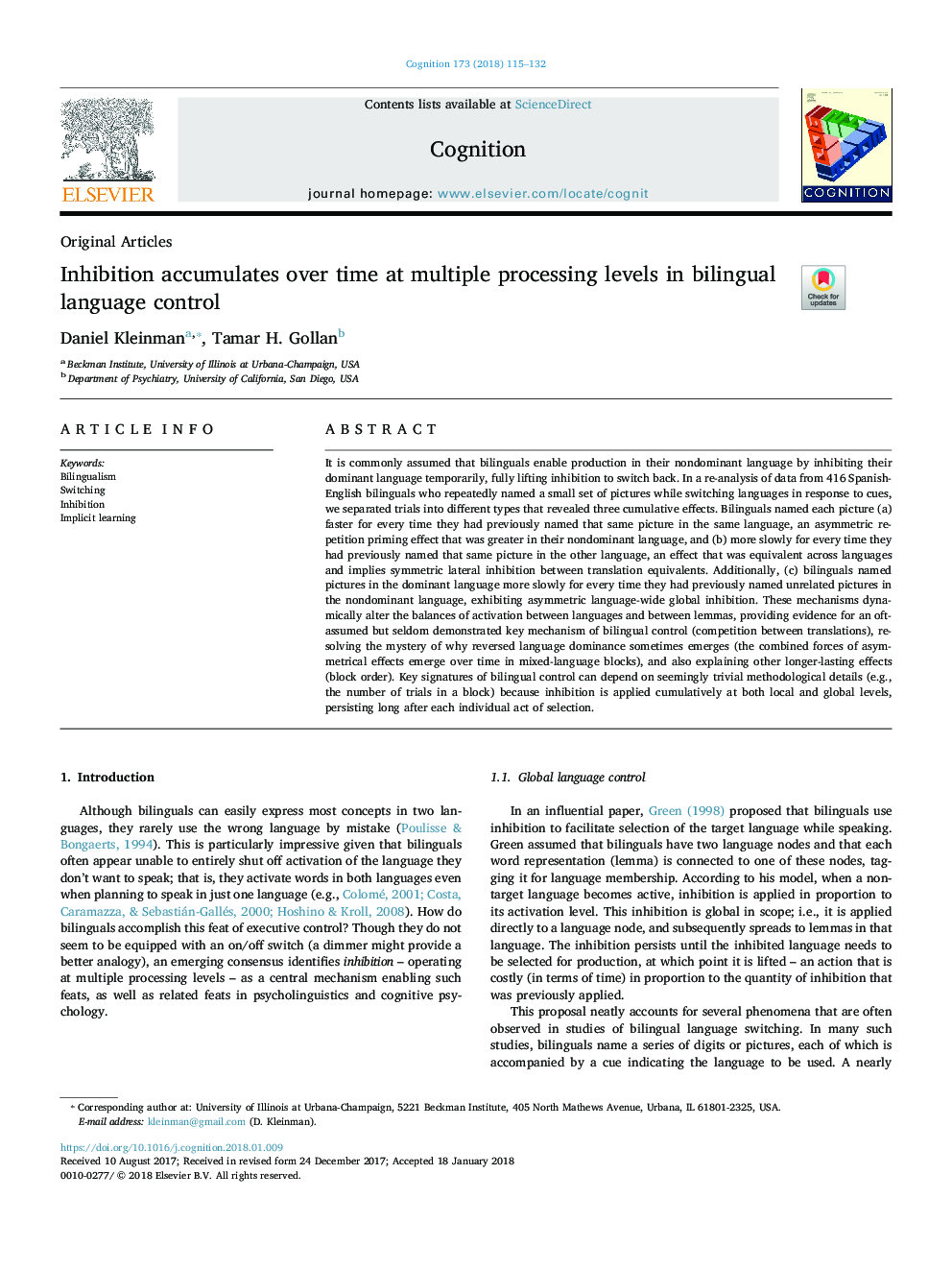| Article ID | Journal | Published Year | Pages | File Type |
|---|---|---|---|---|
| 7285482 | Cognition | 2018 | 18 Pages |
Abstract
It is commonly assumed that bilinguals enable production in their nondominant language by inhibiting their dominant language temporarily, fully lifting inhibition to switch back. In a re-analysis of data from 416 Spanish-English bilinguals who repeatedly named a small set of pictures while switching languages in response to cues, we separated trials into different types that revealed three cumulative effects. Bilinguals named each picture (a) faster for every time they had previously named that same picture in the same language, an asymmetric repetition priming effect that was greater in their nondominant language, and (b) more slowly for every time they had previously named that same picture in the other language, an effect that was equivalent across languages and implies symmetric lateral inhibition between translation equivalents. Additionally, (c) bilinguals named pictures in the dominant language more slowly for every time they had previously named unrelated pictures in the nondominant language, exhibiting asymmetric language-wide global inhibition. These mechanisms dynamically alter the balances of activation between languages and between lemmas, providing evidence for an oft-assumed but seldom demonstrated key mechanism of bilingual control (competition between translations), resolving the mystery of why reversed language dominance sometimes emerges (the combined forces of asymmetrical effects emerge over time in mixed-language blocks), and also explaining other longer-lasting effects (block order). Key signatures of bilingual control can depend on seemingly trivial methodological details (e.g., the number of trials in a block) because inhibition is applied cumulatively at both local and global levels, persisting long after each individual act of selection.
Related Topics
Life Sciences
Neuroscience
Cognitive Neuroscience
Authors
Daniel Kleinman, Tamar H. Gollan,
